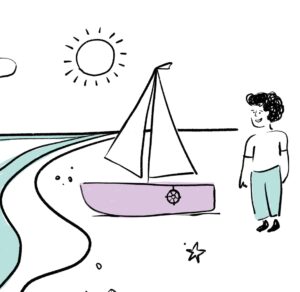Written by Julie Meek.
When I think of iron, I think of Popeye. The image that comes to mind is Popeye clutching his can of spinach and gulping it down with gigantic biceps bulging. Sadly, Popeye did not get his iron and strength from spinach. It was a great story though!
Julie Meek
A nutritionist and dietitian, Julie Meek is one of the most respected sports’ dietitians in Australia with over 15 years experience in public, sports and corporate nutrition.
https://www.juliemeek.com.au
Iron Deficiency
Iron is an important nutrient for our health and wellbeing, so important that iron deficiency is ranked in the top 10 health problems in the world.
It is required for the formation of the oxygen carriers, haemoglobin in the blood and myoglobin in the muscles. Iron carries oxygen around in the blood, so it is right up there with all the essential boxes our bodies need to tick.
The Exercise Conundrum
Heavy exercise increases iron requirements by increasing iron loss from the body through sweat and gastrointestinal bleeding (especially if anti-inflammatory drugs are used for injuries). Red blood cells are also destroyed by continual jarring and impact, particularly in high impact activities such as running.
Plant-Based and Animal Iron Sources Are Not The Same
Iron in food is found in two forms; ‘haem’ iron which is found in animal foods and ‘non-haem’ iron which is found in plant foods. Spinach and silver beet are touted as great sources of iron and do provide non-haem iron, but it is not well absorbed by our bodies.
Foods containing non-haem iron can also contain other substances, which make the iron unavailable to your body. These include tannin (in tea), phytates (in wheat bran and breakfast cereals) and oxalates (in spinach). The consumption of Vitamin C during the same meal enhances the iron absorption of these foods.
Therefore, if your diet is based mainly on vegetables you may find your iron intake to be not only poor, but potentially unavailable.

Iron Deficiency Symptoms
Initially, symptoms of iron deficiency can be tiredness and fatigue. If iron stores become lower, symptoms include severe fatigue, cramps, headaches and shortness of breath.
Iron requirements do vary and females need to consume more iron than males in particular age groups. Plant-based eaters also need to pay extra attention to meeting iron needs.
How Much Do You Need?

It is not advisable to take iron supplements without first checking your iron status via a blood test, as excessive iron intake can be toxic.
It can be super tricky to get enough iron and your current diet may require some revision to achieve an acceptable iron intake. It may also need some juggling to ensure that the absorption of non-haem iron foods are enhanced, but the extra energy and improved performance will be worth it.
You may be interested in another Julie Meek article: Organising a Healthy Lunch
-
 Engaging with Empathy & Compassion | eLearning Course$330.00 inc.GST
Engaging with Empathy & Compassion | eLearning Course$330.00 inc.GST -
 Building Buoyancy | eLearning Course*$180.00 inc.GST
Building Buoyancy | eLearning Course*$180.00 inc.GST -
 Workplace Mental Health for Leaders | eLearning Course + Assessments$770.00 inc.GST
Workplace Mental Health for Leaders | eLearning Course + Assessments$770.00 inc.GST



